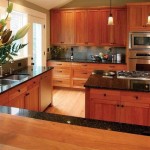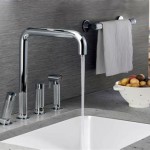Farmhouse Style Kitchen Islands Adding Character To Your Home
Kitchen islands, a cornerstone of modern kitchen design, have evolved beyond mere functional additions. They now serve as focal points, contributing significantly to the overall aesthetic and character of a kitchen. Farmhouse style kitchen islands, in particular, offer a unique blend of rustic charm and practical utility, seamlessly integrating into a variety of home decor schemes while injecting warmth and personality into the heart of the home.
The appeal of farmhouse style lies in its simplicity and authenticity. It evokes a sense of nostalgia and comfort, reminiscent of a simpler time when kitchens were the central gathering place for families. Farmhouse kitchen islands achieve this ambiance through the incorporation of natural materials, handcrafted details, and a focus on functionality. They are more than just workstations; they are statements of style and reflections of a homeowner's appreciation for timeless design.
The construction of a farmhouse kitchen island often prioritizes reclaimed or repurposed materials. This not only adds to its unique character but also aligns with a growing interest in sustainable design practices. The use of distressed wood, antique hardware, and exposed joinery contributes to the island's rustic appeal, creating a piece that feels both well-loved and purposefully crafted. Choosing the right farmhouse style kitchen island needs careful consideration to fully capture the desired aesthetic and enhance the functionality of the kitchen space. This involves evaluating various key aspects, including the materials used, the design elements incorporated, and the overall integration with the existing kitchen layout. Factors such as the size of the kitchen, the color scheme, and the specific storage needs should all play a role in determining the ideal farmhouse kitchen island.
The Foundations of Farmhouse Island Design: Materials and Construction
The selection of materials is paramount in achieving the desired farmhouse aesthetic. Wood, in its various forms, is the cornerstone of farmhouse style. Reclaimed wood, with its inherent imperfections and rich history, is a particularly popular choice. These imperfections, such as knots, nail holes, and variations in grain, add character and tell a story, making each island truly unique. The finish applied to the wood also plays a crucial role. Distressed finishes, achieved through techniques like sanding, staining, and painting, enhance the rustic appeal, creating a sense of age and authenticity.
Beyond reclaimed wood, other natural materials can be incorporated to further enhance the farmhouse aesthetic. Stone countertops, such as granite or marble, offer durability and elegance while complementing the warmth of the wood. Butcher block countertops, made from tightly joined strips of wood, provide a functional and visually appealing surface for food preparation. Exposed brick accents, either as part of the island's structure or as a backsplash, can add texture and visual interest. Metal hardware, such as wrought iron hinges and drawer pulls, contributes to the rustic character and provides a durable and functional element.
The construction of a farmhouse kitchen island often involves traditional joinery techniques, such as mortise and tenon joints, which are known for their strength and durability. These techniques not only ensure the structural integrity of the island but also add to its handcrafted appeal. Exposed joinery, where the connection points are visible, can be a design feature in itself, showcasing the craftsmanship and attention to detail. Furthermore, the design of the island’s base, whether it features turned legs, Shaker-style panels, or open shelving, significantly contributes to its overall farmhouse aesthetic. These details are essential for creating an authentic and inviting space.
Key Design Elements That Define Farmhouse Style Islands
Farmhouse style is characterized by its thoughtful incorporation of specific design elements that contribute to its rustic charm and functional appeal. These elements range from the overall shape and size of the island to the specific details incorporated into its design. One prominent feature is the incorporation of open shelving. Unlike closed cabinets, open shelving allows for the display of cherished items, such as vintage dishes, cookbooks, and decorative objects. This adds a personal touch to the kitchen and creates a warm and inviting atmosphere. The items displayed on the shelves become part of the overall design, contributing to the farmhouse aesthetic.
Another defining element is the incorporation of furniture-style details. Farmhouse islands often resemble freestanding pieces of furniture, rather than built-in components. This can be achieved through the use of turned legs, decorative corbels, and apron details. These furniture-style elements add character and create a sense of history. The island may also incorporate elements traditionally found in other types of furniture, such as drawers with vintage-inspired hardware or a built-in hutch with glass doors. The combination of these elements creates a unique and personalized design.
The color palette used in a farmhouse kitchen island is also crucial in achieving the desired aesthetic. Neutral colors, such as whites, creams, and grays, are commonly used as a base. These colors create a light and airy feel, and provide a backdrop for other design elements to stand out. Accent colors, such as blues, greens, and reds, can be incorporated through accessories, textiles, and painted details. These accent colors add personality and warmth to the space. The use of contrasting colors, such as a dark-stained wood island with a light-colored countertop, can also create visual interest. A careful selection of colors is key to creating a cohesive and inviting farmhouse kitchen.
Functionality Meets Aesthetics: Maximizing the Utility of Farmhouse Islands
While aesthetics are important, farmhouse kitchen islands are also designed to be highly functional. They serve as versatile workspaces, providing ample counter space for food preparation, serving, and gathering. Thoughtful planning is essential to ensure that the island meets the specific needs of the homeowner. The size and shape of the island should be carefully considered, taking into account the size of the kitchen and the desired workflow.
Storage is another key consideration. Farmhouse islands often incorporate a variety of storage solutions, including drawers, cabinets, and open shelving. Drawers are ideal for storing utensils, linens, and small appliances. Cabinets can be used to store pots, pans, and other larger items. Open shelving provides easy access to frequently used items and allows for the display of decorative objects. The placement of these storage elements should be carefully planned to maximize efficiency and convenience. Pull-out shelves and organizers can be used to further enhance the functionality of the island.
Beyond storage, farmhouse kitchen islands can also incorporate other functional features. A built-in sink can provide a convenient space for washing dishes and preparing food. A built-in cooktop can transform the island into a cooking station. A breakfast bar can provide a casual seating area for meals and socializing. The addition of electrical outlets is essential for powering appliances and charging devices. Proper lighting, such as pendant lights or recessed lighting, can illuminate the island and create a welcoming atmosphere. By carefully considering these functional needs, homeowners can create a farmhouse kitchen island that is both beautiful and practical.
Integrating a farmhouse style kitchen island requires a holistic approach, considering the existing kitchen design and the overall aesthetic the homeowner wishes to achieve. The island should not only complement the surrounding cabinetry and countertops but also enhance the functionality and flow of the space. This involves careful consideration of dimensions, materials, finishes, and the incorporation of design elements that align with the farmhouse style ethos.
The size of the kitchen is a crucial factor in determining the appropriate size of the island. An undersized island can feel inadequate and fail to provide sufficient workspace or storage, while an oversized island can overwhelm the space and impede movement. The shape of the island should also be carefully considered. Rectangular islands are a common choice, but other shapes, such as oval or L-shaped islands, may be more suitable for certain kitchen layouts. The placement of the island should be carefully planned to ensure that it does not obstruct walkways or interfere with the opening of appliances.
The selection of materials and finishes should be consistent with the existing kitchen design. If the kitchen features white cabinetry and granite countertops, the island should incorporate similar materials and finishes to create a cohesive look. However, the island can also be used as an opportunity to introduce a contrasting element. For example, a dark-stained wood island can provide a focal point in a kitchen with light-colored cabinetry. The incorporation of design elements, such as open shelving, furniture-style legs, and vintage-inspired hardware, can further enhance the farmhouse aesthetic and create a personalized space.

19 Ways To Create Vintage Charm In Modern Farmhouse Kitchen

Adding Character To Your Kitchen Farmhouse Cabinet Trim

Adding Character To A Basic Kitchen Island The Lettered Cottage

Popular Kitchen Island Features

12 Ways To Add Farmhouse Style A Builder Grade Home

40 Kitchen Island Ideas To Upgrade Your Space Cabinet Kings

23 Modern Farmhouse Kitchen Decor Ideas

How To Add Character A Kitchen Peninsula Or Island

31 Modern Farmhouse Kitchen Islands Steeped In Character

16 Ways To Add Architectural Character Even When Your Home Has None Kitchens Kitchen Design Cookbook Storage
Related Posts








